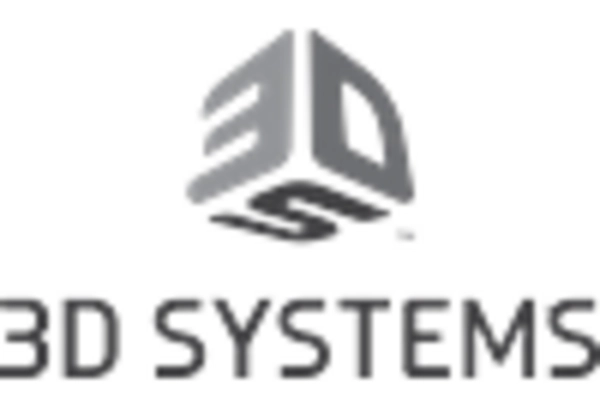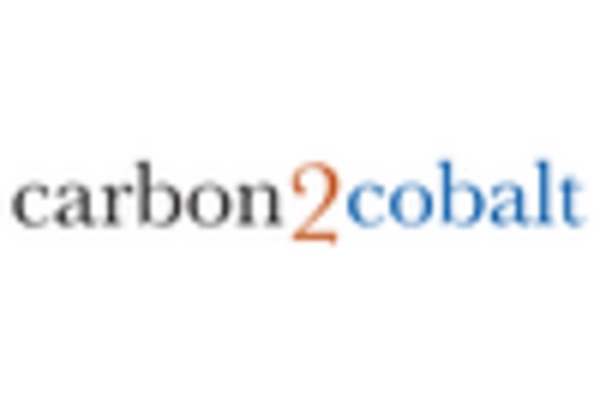Advancements in Material Science
Innovations in material science are playing a crucial role in the evolution of the Photopolymerization Process 3D Printing Market. The development of new photopolymers and resins has expanded the range of applications for 3D printing, enabling the production of parts with enhanced mechanical properties and durability. These advancements allow for the creation of functional prototypes and end-use parts that meet stringent industry standards. Furthermore, the introduction of biocompatible materials is opening new avenues in the medical and dental sectors, where precision and safety are paramount. As the material options continue to diversify, the market is likely to witness increased adoption rates, driven by the demand for high-performance materials.
Increased Focus on Sustainability
Sustainability is becoming a pivotal driver in the Photopolymerization Process 3D Printing Market as companies strive to reduce their environmental footprint. The ability to produce parts on-demand minimizes waste associated with traditional manufacturing processes, aligning with global sustainability goals. Moreover, advancements in recyclable and biodegradable materials are enhancing the eco-friendliness of 3D printing technologies. As consumers and businesses alike prioritize sustainable practices, the demand for environmentally responsible manufacturing solutions is likely to grow. This shift not only supports corporate social responsibility initiatives but also positions companies favorably in a market that increasingly values sustainability.
Rising Demand for Prototyping Solutions
The Photopolymerization Process 3D Printing Market is experiencing a notable increase in demand for rapid prototyping solutions across various sectors. Industries such as automotive, aerospace, and consumer goods are increasingly adopting 3D printing technologies to accelerate product development cycles. This shift is driven by the need for faster time-to-market and the ability to create complex geometries that traditional manufacturing methods cannot achieve. According to recent data, the prototyping segment is projected to account for a significant share of the market, reflecting a growing trend towards innovation and efficiency. As companies seek to enhance their competitive edge, the adoption of photopolymerization processes is likely to expand, further solidifying its role in the prototyping landscape.
Growing Adoption in Healthcare Applications
The healthcare sector is increasingly recognizing the potential of the Photopolymerization Process 3D Printing Market for applications such as custom implants, surgical guides, and dental prosthetics. The ability to produce patient-specific solutions with high precision is transforming traditional medical practices. Recent studies indicate that the use of 3D printing in healthcare could lead to cost reductions and improved patient outcomes. As hospitals and clinics invest in advanced 3D printing technologies, the market is expected to expand significantly. This trend is further supported by regulatory bodies that are beginning to establish guidelines for the use of 3D printed medical devices, thereby enhancing the credibility and acceptance of these technologies in clinical settings.
Integration of Automation and AI Technologies
The integration of automation and artificial intelligence technologies is poised to revolutionize the Photopolymerization Process 3D Printing Market. Automation enhances production efficiency, reduces human error, and allows for continuous operation, which is particularly beneficial in high-volume manufacturing scenarios. Meanwhile, AI technologies facilitate better design optimization and predictive maintenance, leading to improved operational performance. As manufacturers seek to streamline their processes and reduce costs, the adoption of these advanced technologies is expected to rise. This trend may lead to a more competitive landscape, where companies that leverage automation and AI can achieve significant advantages in terms of speed and quality.
















Leave a Comment